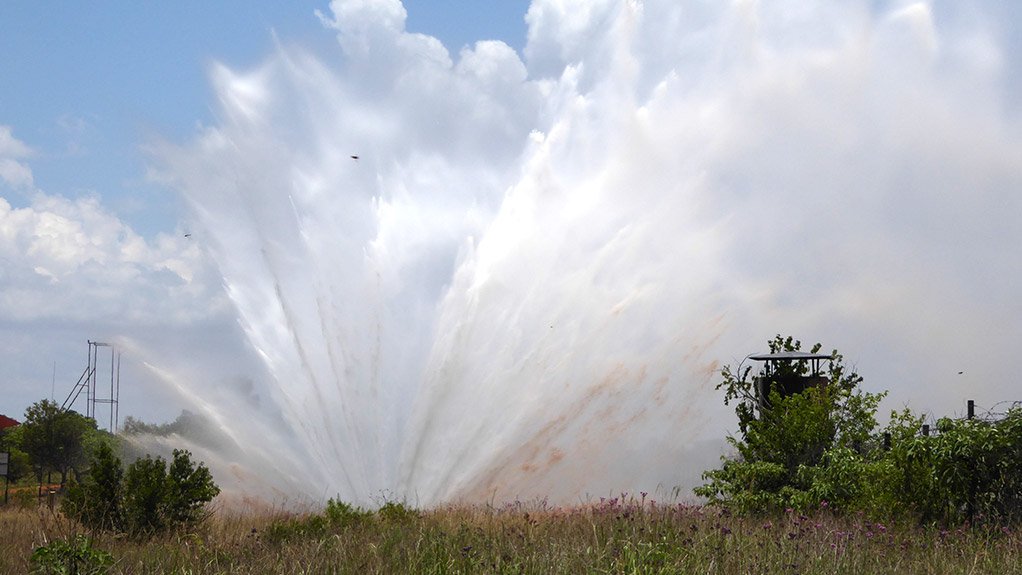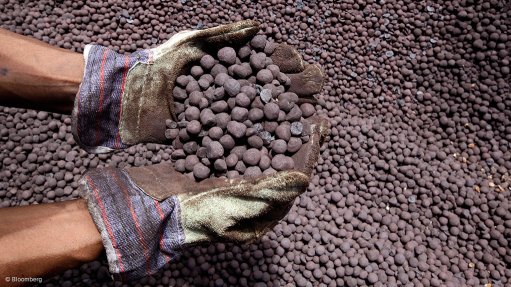CSIR scientists detect sinkholes with new technology
Scientists at the Council for Scientific and Industrial Research (CSIR) recently detected the formation of a sinkhole in Centurion, Pretoria, using satellite imaging technology which they have developed.
CSIR student researcher Andre Theron used the Azimuth technology, a system designed to detect centimetre- to millimetre-scale surface deformation, to discover the sinkhole.
The CSIR processed historical satellite imagery over the greater Pretoria area and also started with new image acquisitions that would be ongoing for the foreseeable future.
“Our analysis indicated that surface subsidence was taking place at an unpopulated site in Centurion. The subsidence was detected with a total of 6.6 cm of deformation recorded between June and August 2015. The deformation features were about 100 m in diameter,” CSIR synthetic aperture radar senior researcher Dr Jeanine Engelbrecht said.
After being granted access to the property in December to investigate if any signs of deformation were visible at the surface, the CSIR scientists determined that a sinkhole had indeed formed.
“The water supply pipe was leaking and, initially, the sinkhole was about 0.5 m x 1 m in extent. However, later on the same morning, the pipe burst and resulted in a continuous jet of water spraying from the ground. We also observed tension cracks of tens of metres long surrounding the deformation feature,” Engelbrecht noted.
She added that the researchers postulated that the pipe could have been leaking for some time, resulting in a cavity in the dolomite. This process also caused the small-scale deformation features that they were able to detect on the satellite imagery.
“When the sinkhole started to form on the morning of December 17, the stress on the pipe infrastructure increased to such an extent that the pipe ruptured, causing the jets of water observed,” Engelbrecht explained.
In South Africa, extensive areas were underlain by dolomitic rock known to be associated with sudden, catastrophic collapse. Over 3 000 sinkhole and subsidence events have been recorded in the country between the early 1960s and the end of 2012.
The consequences of sinkhole formation were severe and resulted in the deaths of at least 39 people over the past 50 years in South Africa.
Although sinkholes occurred with little warning, the appearance of tension cracks and surface subsidence were often early warning signs of impending sinkhole formation. The risks associated with sinkhole hazards suggest that the development of a technique to detect and measure precursory deformation before the sudden collapse would be invaluable.
“This is a great validation of the technology and it proves that satellite imaging technology can be used to detect small-scale surface deformation before sinkhole development.
“A lot of additional work will need to be performed to test the operational limitations of the technique. However, the results prove that a sinkhole early-warning system may be on the cards in the near future,” Engelbrecht said.
Comments
Press Office
Announcements
What's On
Subscribe to improve your user experience...
Option 1 (equivalent of R125 a month):
Receive a weekly copy of Creamer Media's Engineering News & Mining Weekly magazine
(print copy for those in South Africa and e-magazine for those outside of South Africa)
Receive daily email newsletters
Access to full search results
Access archive of magazine back copies
Access to Projects in Progress
Access to ONE Research Report of your choice in PDF format
Option 2 (equivalent of R375 a month):
All benefits from Option 1
PLUS
Access to Creamer Media's Research Channel Africa for ALL Research Reports, in PDF format, on various industrial and mining sectors
including Electricity; Water; Energy Transition; Hydrogen; Roads, Rail and Ports; Coal; Gold; Platinum; Battery Metals; etc.
Already a subscriber?
Forgotten your password?
Receive weekly copy of Creamer Media's Engineering News & Mining Weekly magazine (print copy for those in South Africa and e-magazine for those outside of South Africa)
➕
Recieve daily email newsletters
➕
Access to full search results
➕
Access archive of magazine back copies
➕
Access to Projects in Progress
➕
Access to ONE Research Report of your choice in PDF format
RESEARCH CHANNEL AFRICA
R4500 (equivalent of R375 a month)
SUBSCRIBEAll benefits from Option 1
➕
Access to Creamer Media's Research Channel Africa for ALL Research Reports on various industrial and mining sectors, in PDF format, including on:
Electricity
➕
Water
➕
Energy Transition
➕
Hydrogen
➕
Roads, Rail and Ports
➕
Coal
➕
Gold
➕
Platinum
➕
Battery Metals
➕
etc.
Receive all benefits from Option 1 or Option 2 delivered to numerous people at your company
➕
Multiple User names and Passwords for simultaneous log-ins
➕
Intranet integration access to all in your organisation





















